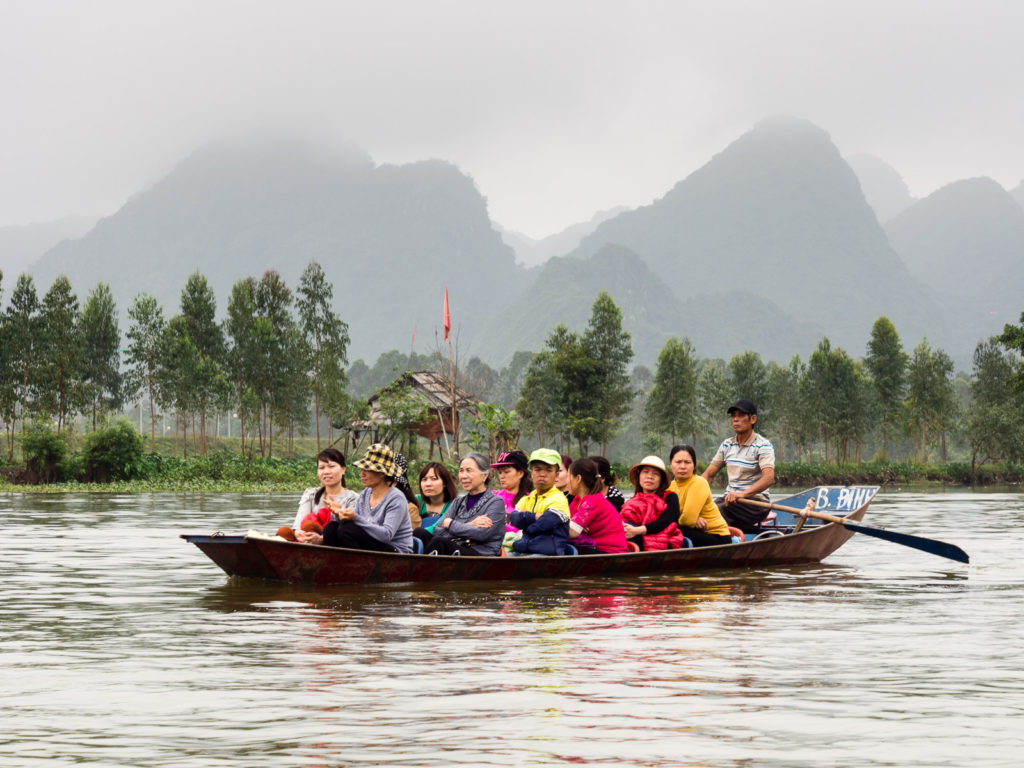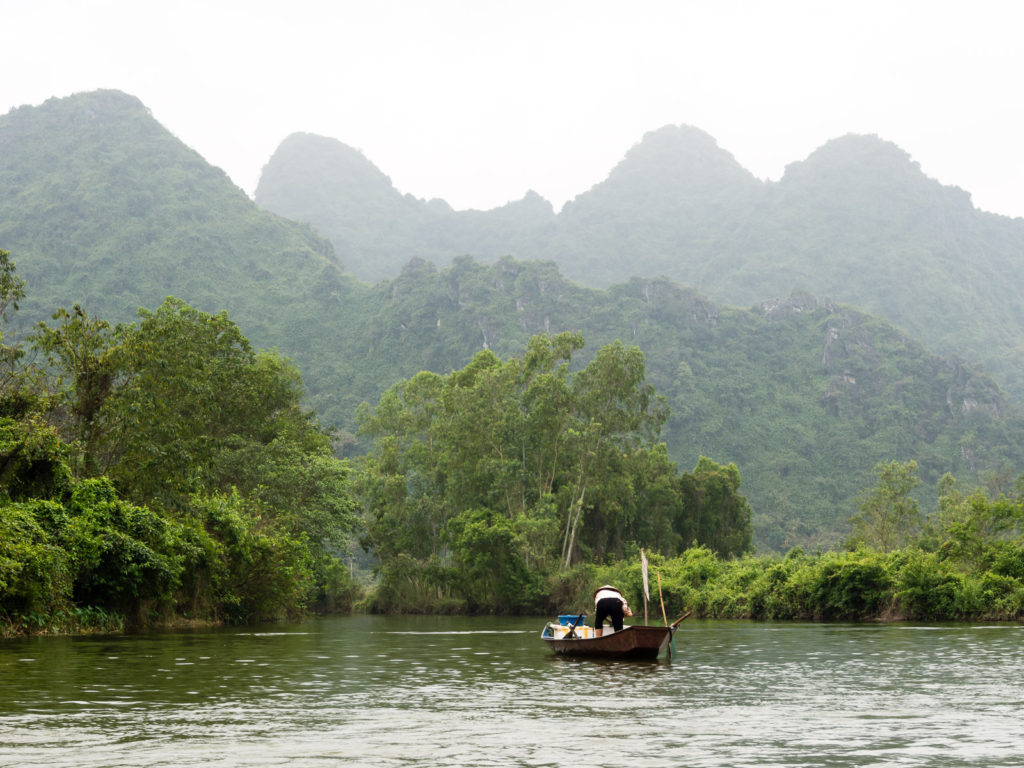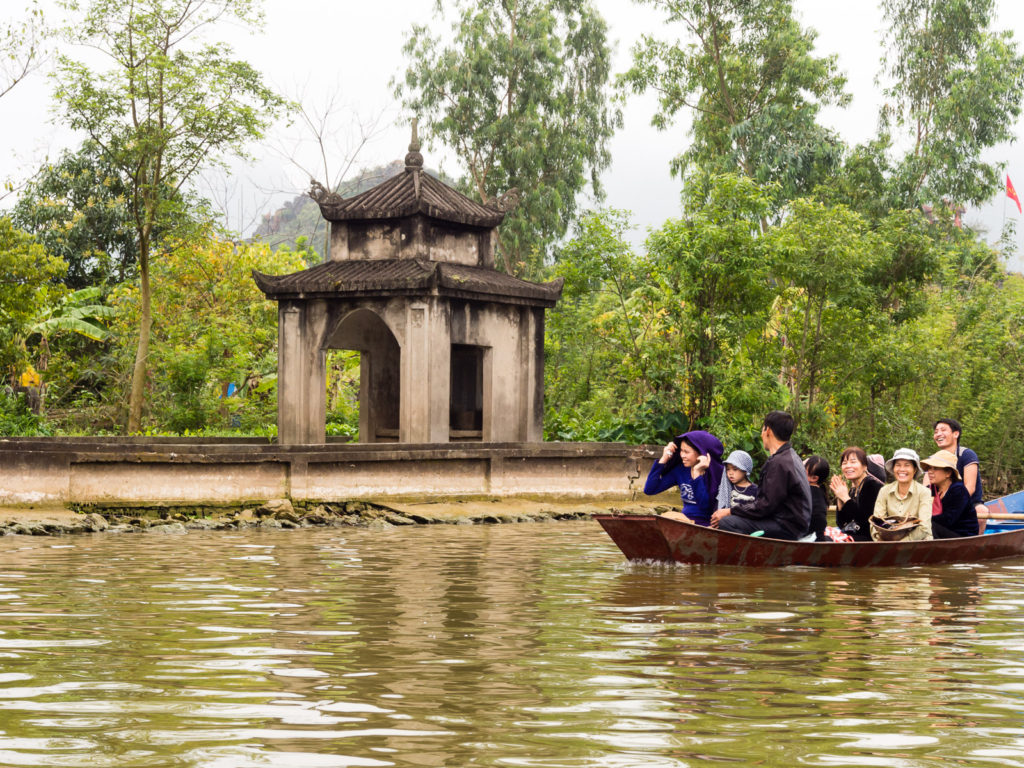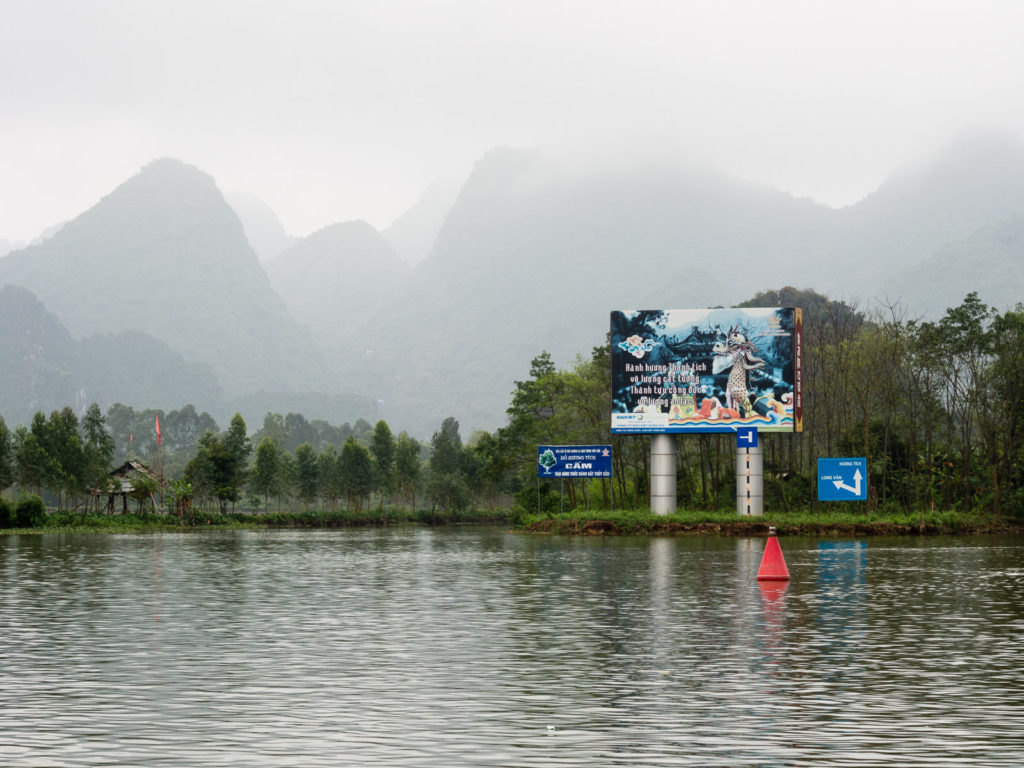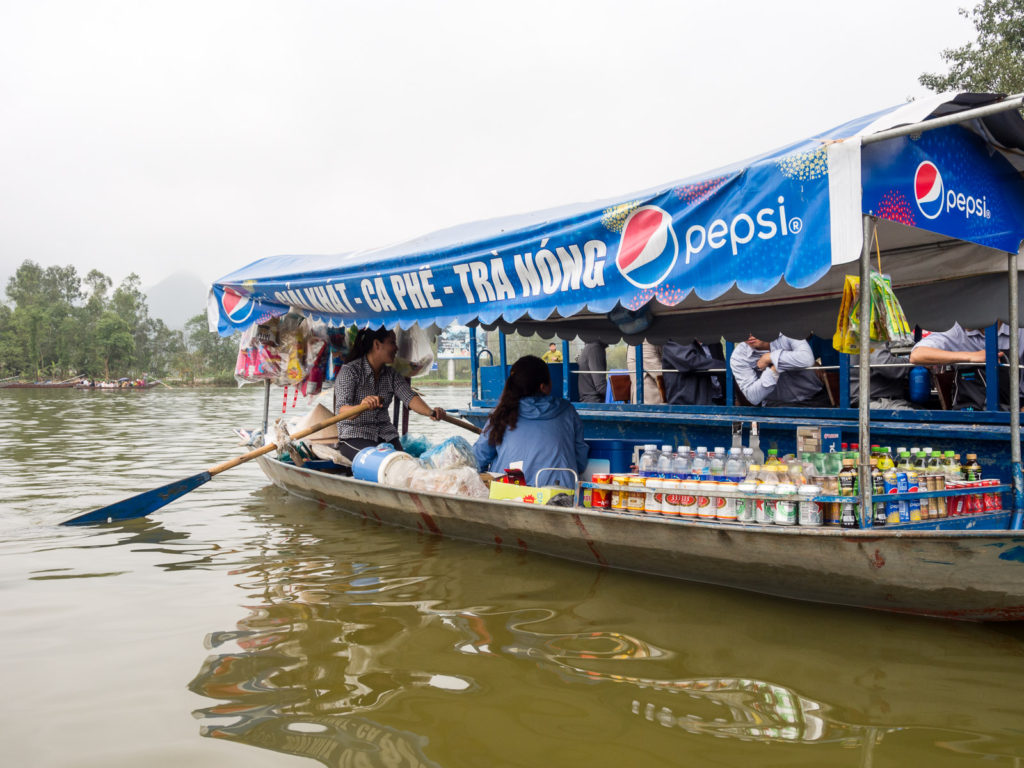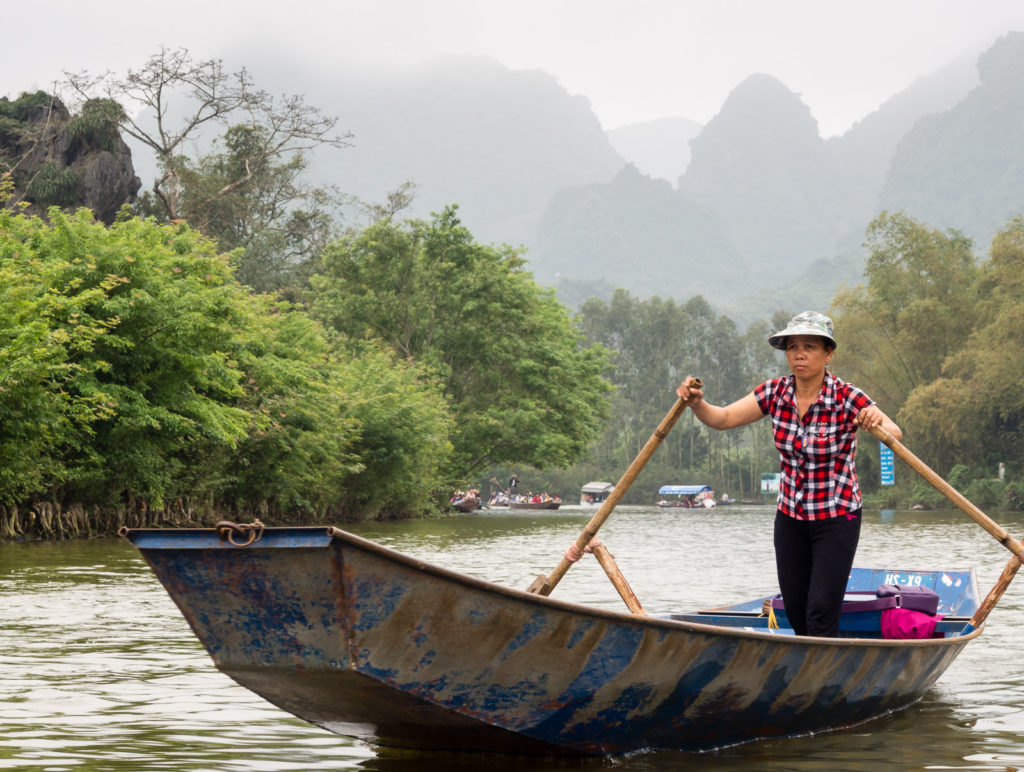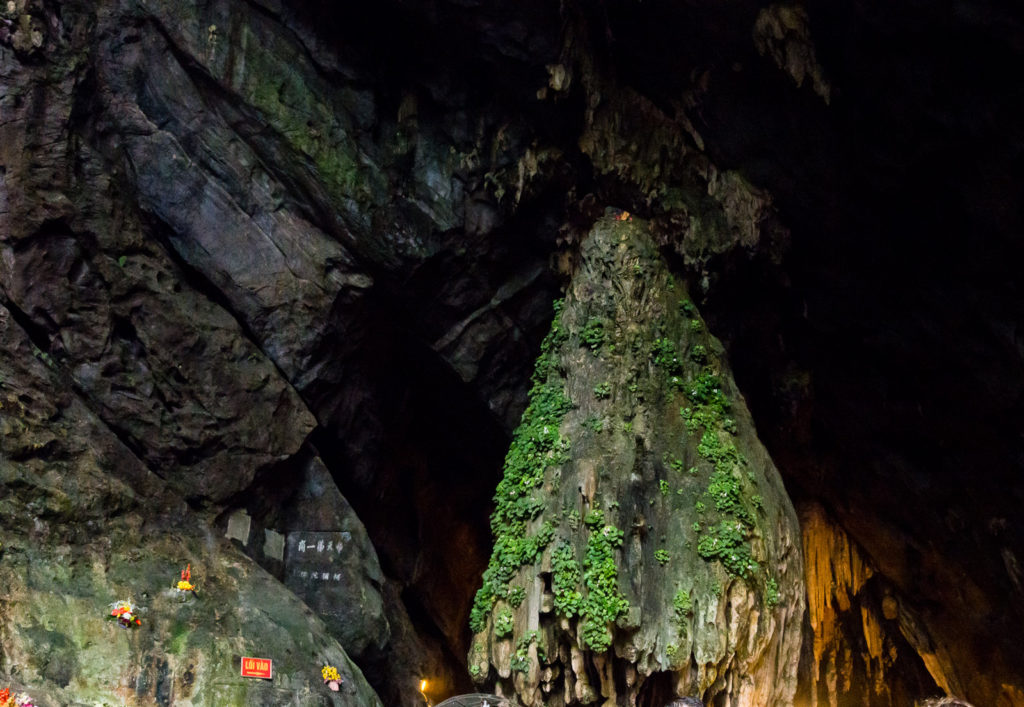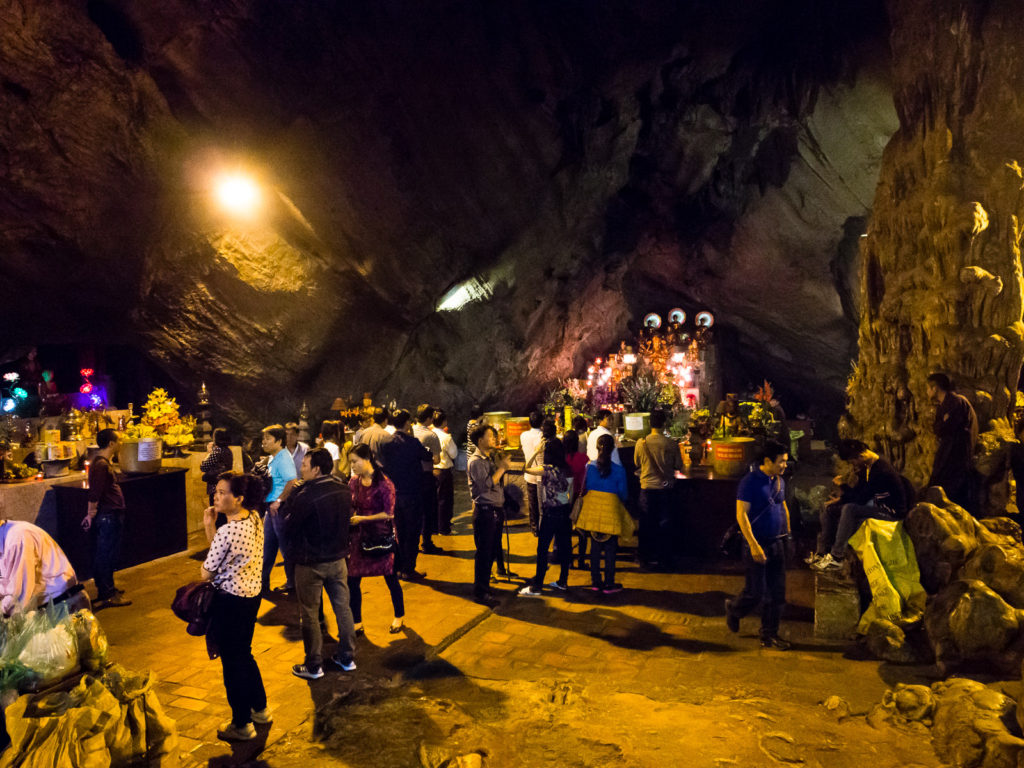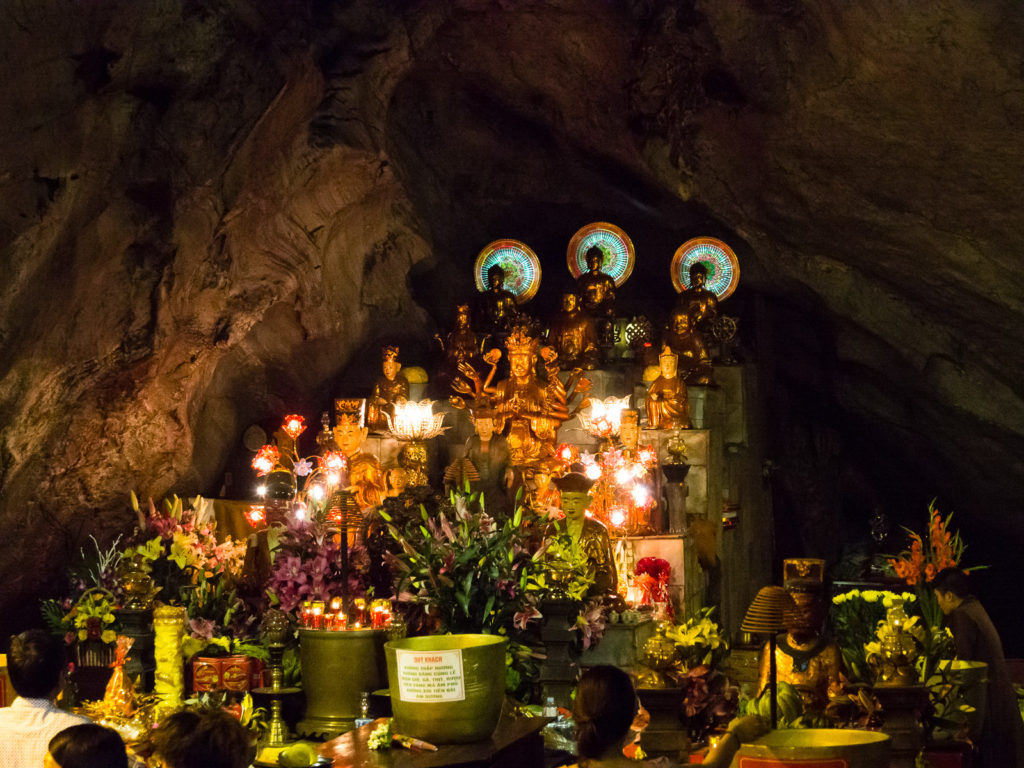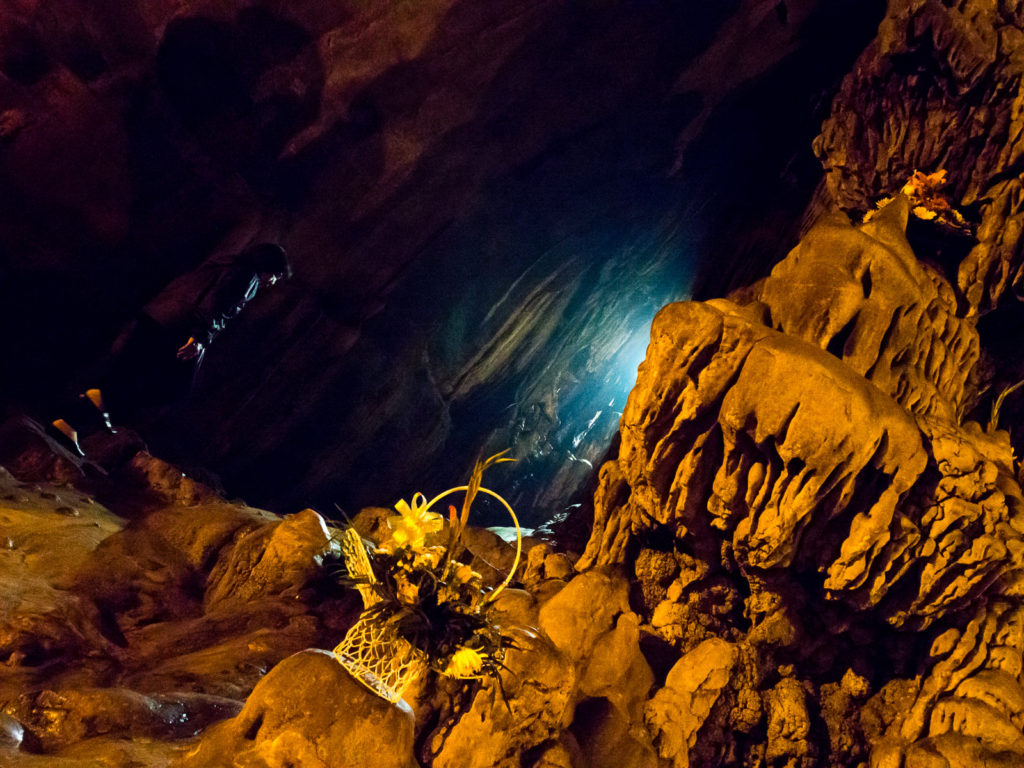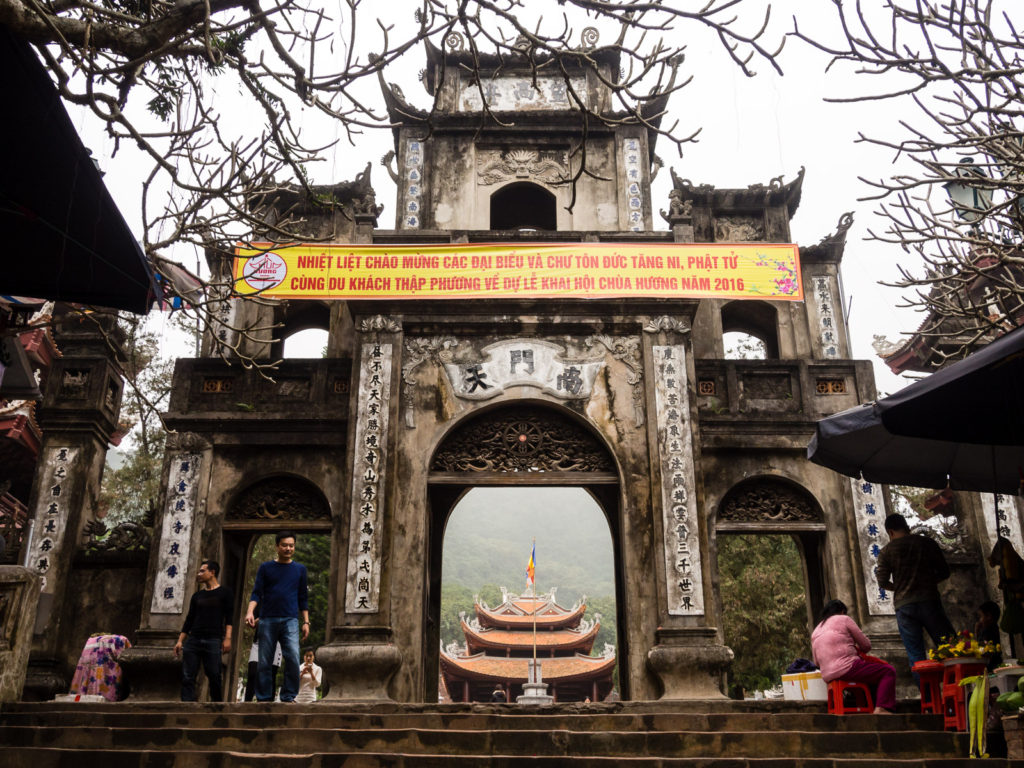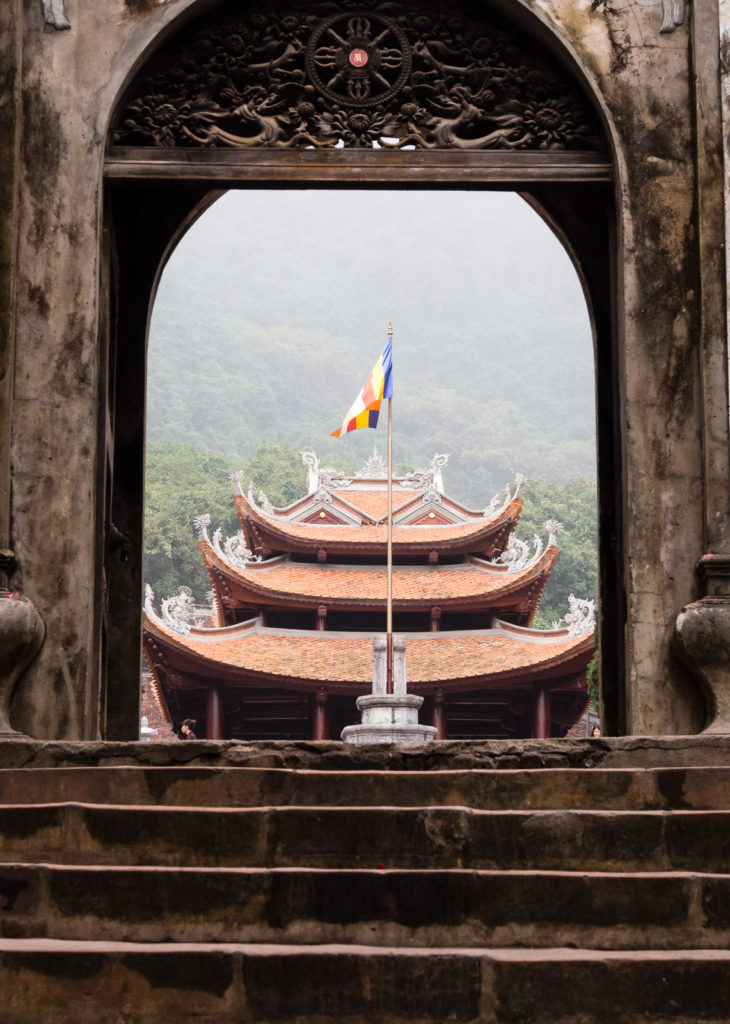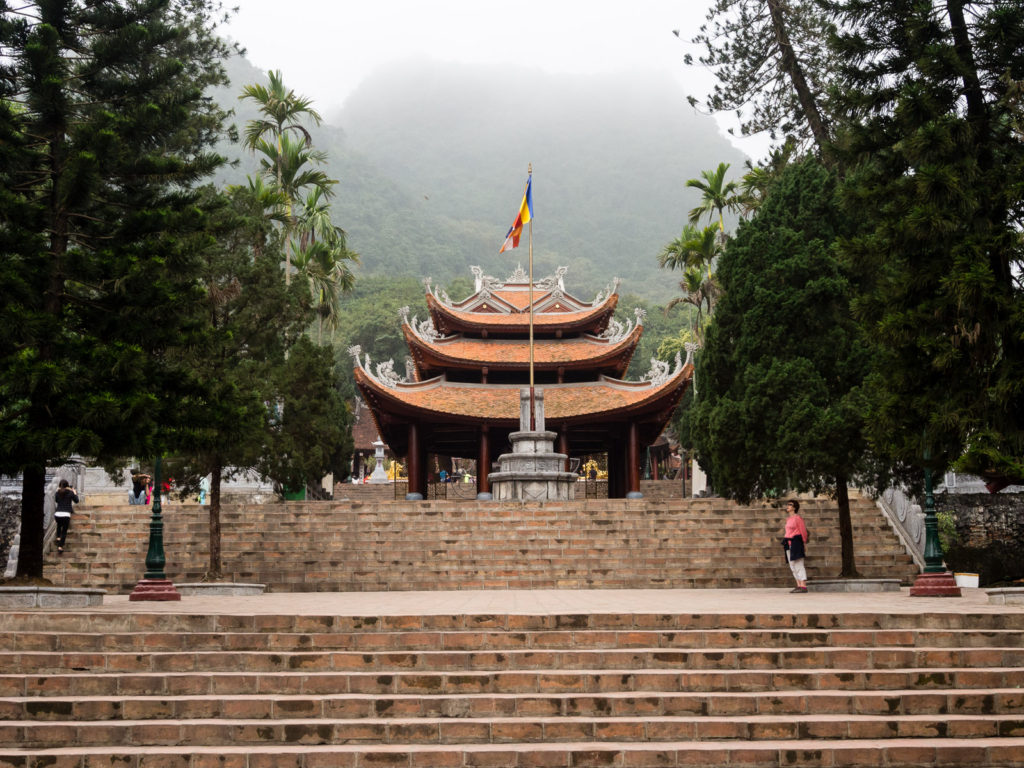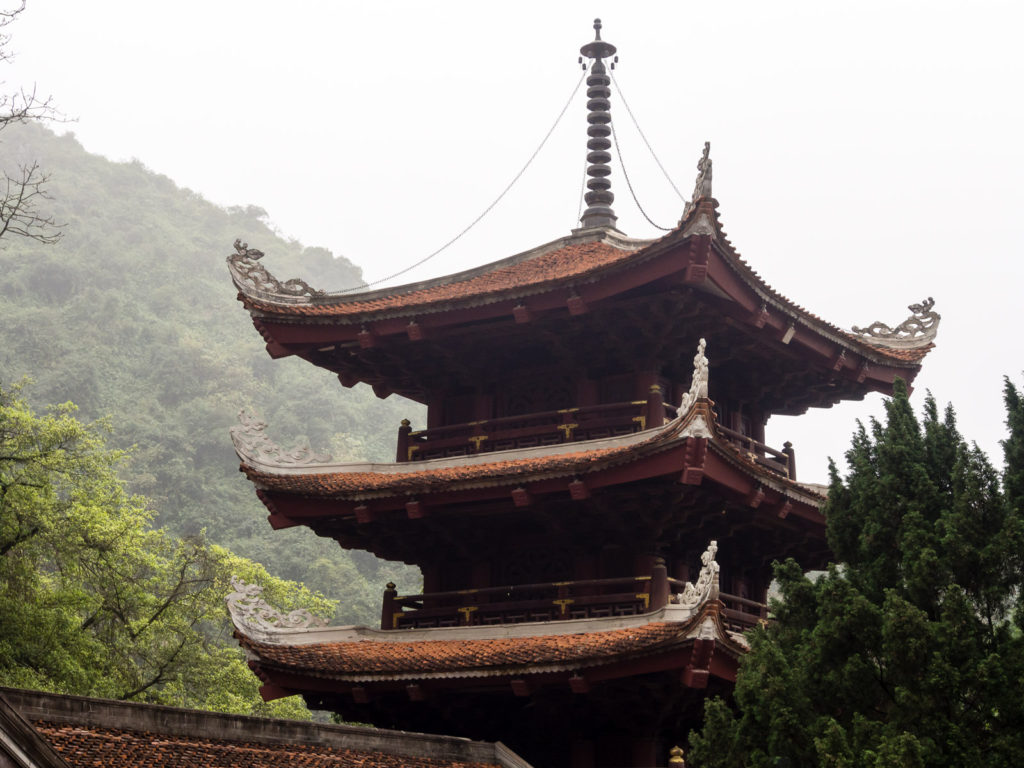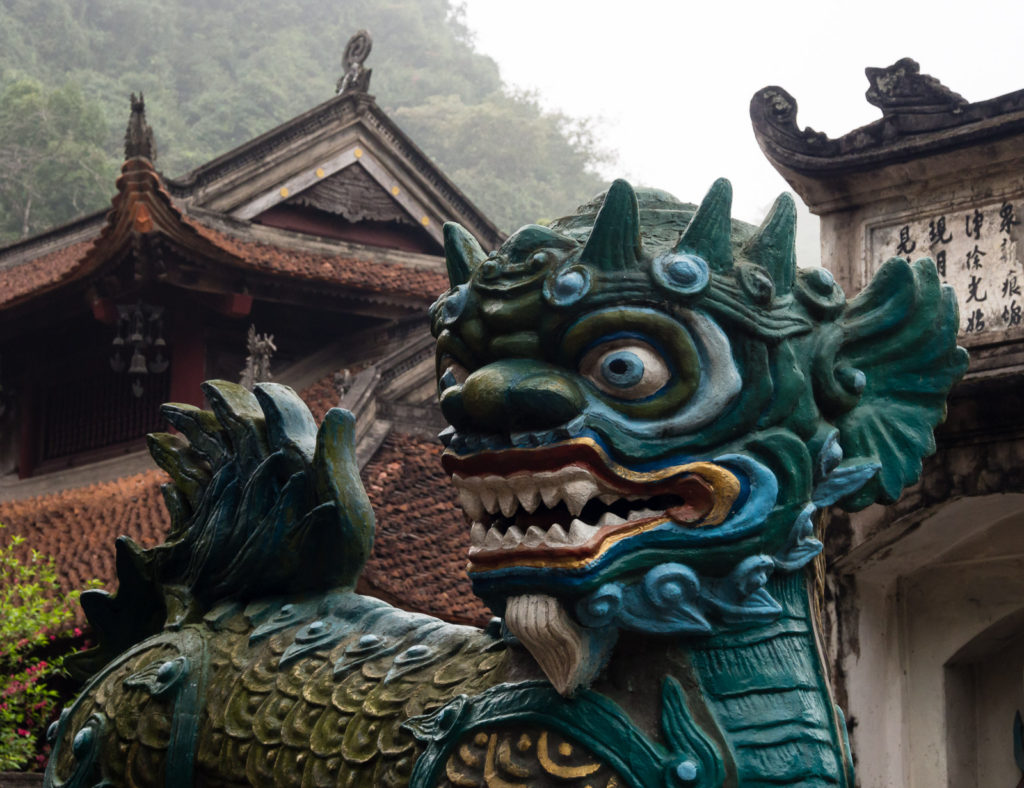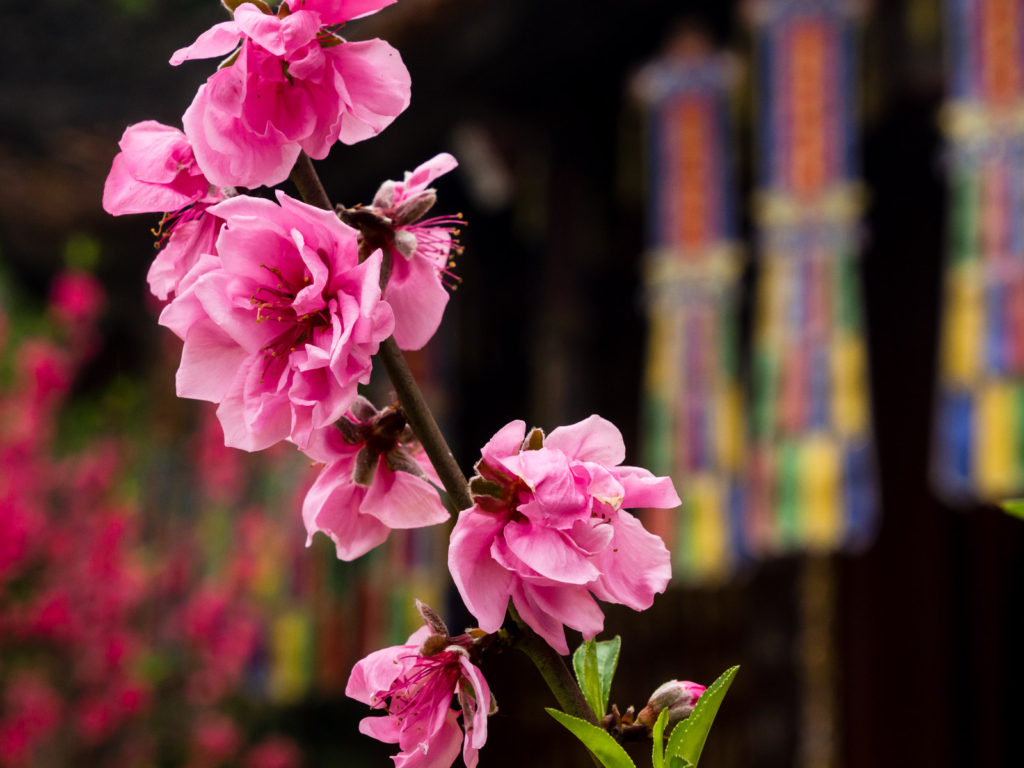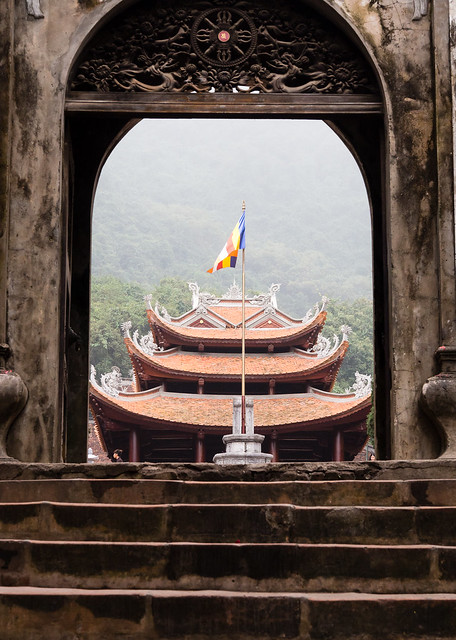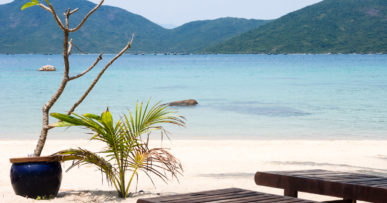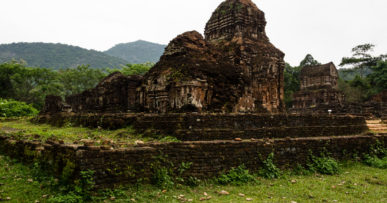Perfume Pagoda is a Buddhist sacred site that can be visited on a day trip from Hanoi. The name refers to a complex of temples built into the limestone mountains, and the main site is actually in a cave. When I saw the photo of it I knew I had to go there – it looked so impressive.
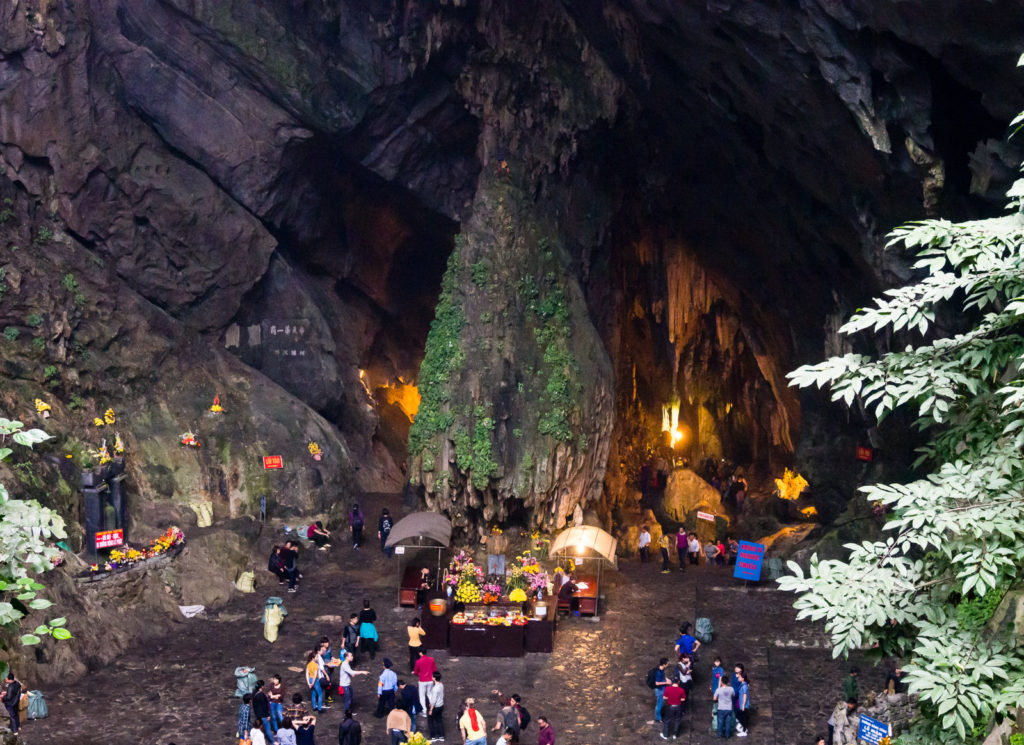
The easiest way to get there is with a group tour. Many tour operators offer the Perfume Pagoda trip, and I don’t think there’s much difference in their itineraries. First they drive you to the pier on Yen river (about 2 hour drive from Hanoi) from where everyone has to take a boat. The river journey, with one stop, takes another 40 minutes. It will be lunch time by the time you get out of the boat on the Perfume Pagoda side, and lunch in one of the many eateries lining up the main tourist street is usually included. After lunch they’ll give you a few hours to go see the cave, then everyone meets up at the boats and they take you back.
I was generally happy with my tour operator, but even with the best company this trip won’t be perfect, because some things just can’t be changed. The boat journey, for instance, can get quite unpleasant if it’s raining or is too hot, since most boats don’t have roofs. They are also very small with low, hard, uncomfortable benches. Lunch will probably be an upsetting experience for people who care about animals; somehow it’s still customary at Perfume Pagoda to kill wildlife for food, and they show it with pictures on the walls of every café. They can serve you vegetarian, but you’ll still be surrounded by those pictures. Still, I’m very happy with my trip, because the Huong Tich Cave was everything I hoped it to be and more.
You can get there by hiking up the mountain, but it’s not recommended – they say the road is lined with souvenir stands and you don’t even see the scenery. So I opted for a cable car ride there and back (for which you’ll have to pay a separate fee – it’s not included with the tour). There wasn’t too many visitors on that day, so the ride was smooth and the cave didn’t feel awfully crowded, as can be seen on some pictures, especially during the winter festival.
There are many legends, beliefs and unusual practices associated with this place – for instance, stalactites and stalagmites here are believed to have special powers and purposes, and people come to get blessings from them. It is said that Guan Yin, the bodhisattva of compassion stayed here one time.
If you take the cable car you’ll have plenty of time to explore both the cave (which isn’t very large inside) and the temple complex at the foot of the mountain called Thien Tru Pagoda. You can do them in any order – I first saw the cave, and then visited the temple on my way back. It is quite spacious with nice pavilions.
I recommend this trip to those interested in sacred ancient places and Buddhist culture.
